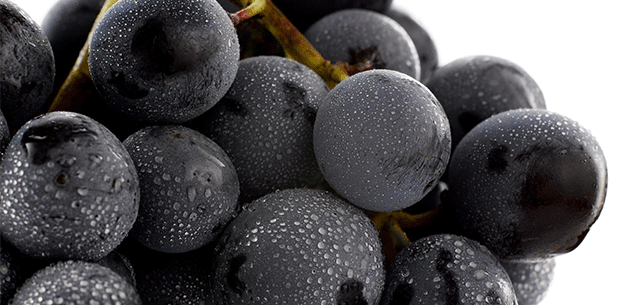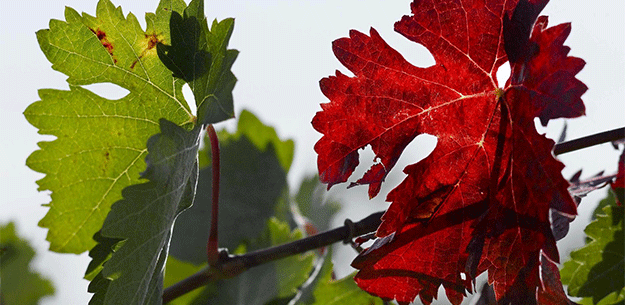.png.transform/rendition-xs/image_image%20(1).png)
Wine Grapes from Spain: Spanish Red Grapes
The tendency to make single-variety wines, dominant in Spain for decades, has led to an increased interest in the identification and authenticity of native varieties. In accordance with current legislation, only those varieties that are found in the Spanish Registry of Commercial Grape Varieties can be cultivated in this country. In total, there are more than a hundred majority varieties grown in Spain, distributed throughout the country and present in the different Designations of Origin as authorized varieties.

The principal native red variety is Tempranillo, which accounts for 20% of the surface area in Spain dedicated to vineyards. Its name alludes to the grape’s temprano, or early, ripening. In addition to Tempranillo, other names for this grape in Spain include Cencíbel in Castile-La Mancha, Ull de Llebre in Catalonia, Tinta del País in Castile-León and Tinta de Madrid in Madrid. In general, young wines made with Tempranillo grapes are crisp and fruity, with aromas of red fruit and licorice. They are balanced on the palate, thanks to their elevated acidity and mature tannins. These characteristics, when combined with their low proclivity for oxidation, mean that these wines are ideal for aging for long periods in oak, lending them complexity in terms of both aromas (leather, licorice, tobacco and cacao) and flavors.
The second most cultivated red grape is the Mediterranean variety Bobal. It is grown extensively throughout eastern Spain and more specifically in inland Valencia, in DO Utiel-Requena. The best plantations still maintain old vines, which despite their low yield produce an exceptional raw material. Traditionally, Bobal grapes have been used to make extremely crisp rosé wines or young red wines meant for early consumption. Today, the combined efforts of winemakers and enologists in the care of both the vineyards and the wine production process are leading to the production of red wines that are apt for aging. These wines are characterized by aromas of red fruit such as currents and raspberries, as well as crisp acidity and soft and velvety tannins.
Originating in Aragón, Garnacha is the most widely cultivated grape variety in the world. This highly resistant variety is capable of standing up to extremely adverse climate conditions, thus explaining its widespread diffusion throughout Spain. Its cultivation has been making a comeback in neglected areas, such as the difficult-to-reach hillside vineyards that are generally situated between a height of 600 and 1,000 meters. This is the case with the vineyards in the Sierra de Gredos mountains, located in the center of the peninsula. Grown in granite-rich soils, there are vines here that are over 50 years old. These old-vine Garnachas are also typical of DOCa Priorat, in Catalonia, where vineyards are planted in slate soils called llicorellas. This is a mountainous area with rugged hillsides and the vines are cultivated on terraces. Under these conditions, Garnacha grapes yield wines that have marked acidity and mineral aromas that reflect the soils where they are grown. This exemplifies the expression of their terroir, as each wine transmits the complexities and singularities of its production area.
Another of the most important native red grape varieties in Spain is Monastrell. This grape is grown extensively throughout the designations of origin in the Mediterranean basin. Of particular note are the plantations in DO Jumilla (Murcia and Albacete), due to the fact that they are cultivated on pie franco, or ungrafted roots. The soil composition here is quite sandy, which is what kept phylloxera – the devastating plague that wreaked havoc on vineyards at the end of the 19th century – from destroying these very low-yield old vines. The resulting wines have an intense color and wide range of aromas, with notes of cherries, plums, figs and raisins. Upon aging in oak, these wines become infused with aromas of black fruit, and are velvety and silky on the palate.
In the area known as el Bierzo, between Galicia and Castile-León in northeastern Spain, the protagonist is the red grape Mencía. Thanks to the influence of Atlantic and Mediterranean climates and the predominantly mineral soil composition, wines from here have their own marked identity. They are potent and balanced, and characterized by aromas of wild fruit against a backdrop of blackberries and fruit preserves. They are velvety on the palate with refreshing acidity and a decidedly mineral character.
of native red grape varieties wouldn’t be complete without mentioning the existing varieties on the Canary Islands, which hail from century-old vines planted on ungrafted rootstock. One of the principal varieties is Listán Negro, which is primarily cultivated on the island of Tenerife. Not only has it adapted very well to the varying altitudes and climates, but also to the islands’ volcanic soil. These wines are very particular, with aromas of wild fruits, rockrose and white flowers, as well as mineral notes and a splendid repertoire of spices.
In accordance with current legislation, only those varieties that are found in the Spanish Registry of Commercial Grape Varieties can be cultivated in this country.
Almudena Martín Rueda / @ICEX


- Spanish Red Wine Grapes 1
- Spanish Red Wine Grapes 2

